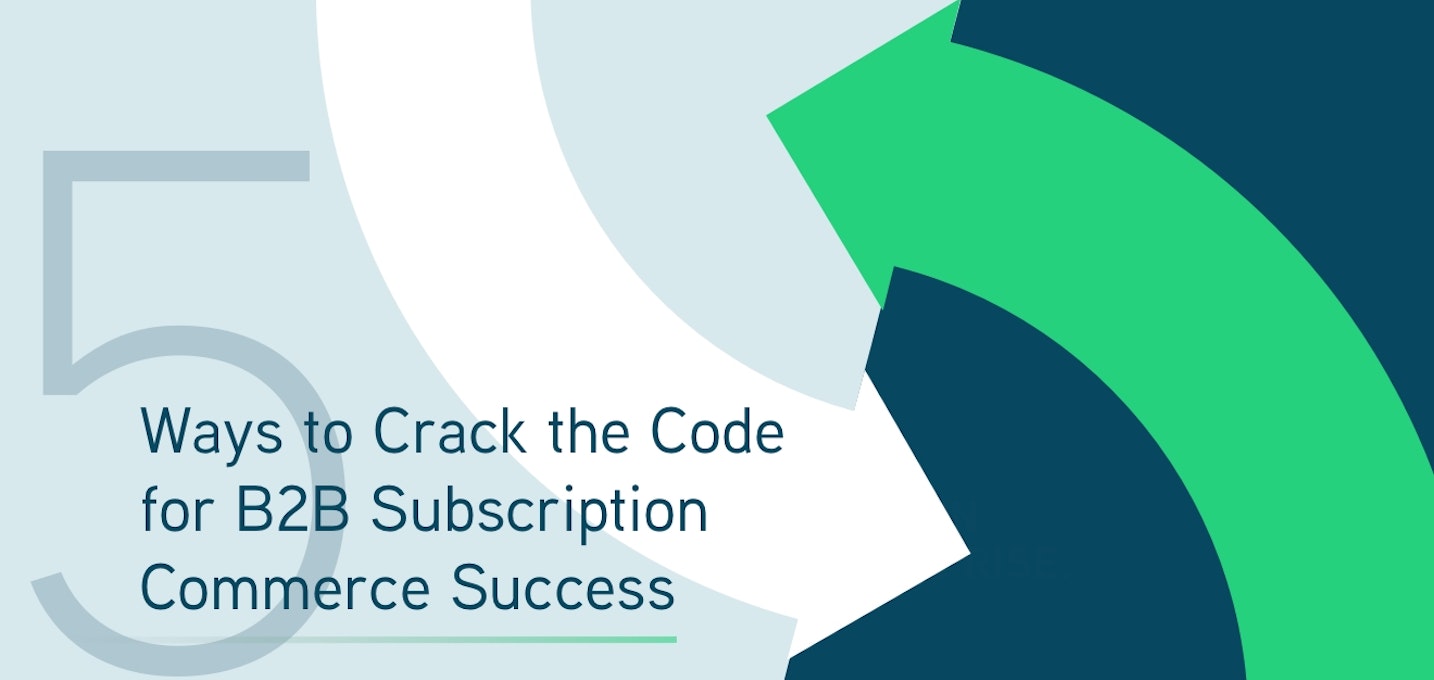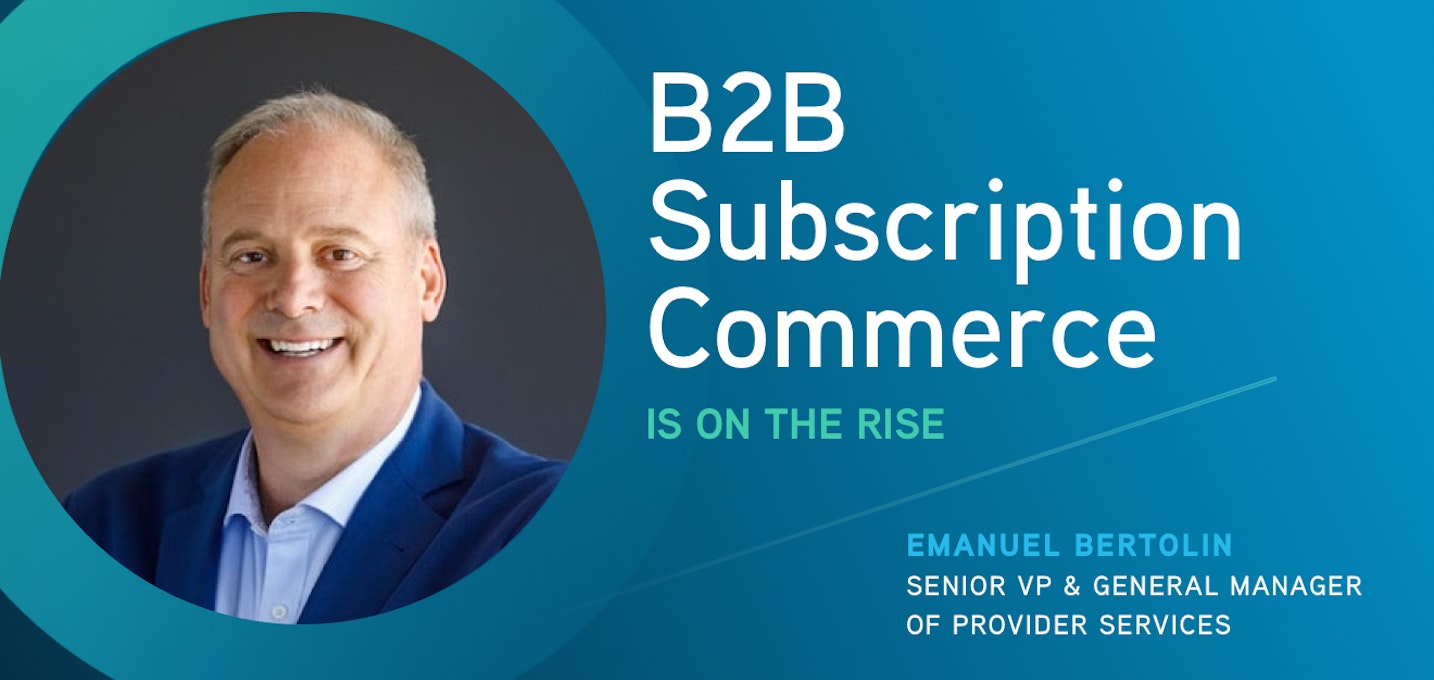Strategy & Best Practices
B2B Subscription Commerce: Providing Resilience in Turbulent Times
By Ideas @ AppDirect / December 11, 2020

The global economy continues to face unprecedented uncertainty in the wake of the COVID-19 pandemic. However, subscription commerce has emerged as one of the few bright spots on the business horizon, exhibiting a resiliency that bodes well for its success long after the pandemic fades.
Indeed, a quick look at recent statistics bears this out. A June 2020 report about COVID-19’s impact on subscription businesses states that while S&P 500 sales contracted at an annual rate of -1.9 percent in the first quarter of 2020, subscription-based revenue grew at an annual rate of 9.5 percent during that same period.
Not only that, but a recent survey by AppDirect found that 95 percent of companies had one or more subscription-based products. At the same time, 69 percent of those companies actually launched a new digital initiative or accelerated existing projects in response to the pandemic.
- What’s more, 50 percent of these companies report that COVID-19 has not had a significant impact on their subscription growth rates.
- And 18 percent say they’ve actually seen subscription growth accelerate during the pandemic.
It’s no wonder then that IDC research director Mark Thomason has this to say about subscriptions: “While it’s still early in the lifecycle of the pandemic, it appears that companies with recurring business models have weathered the COVID-19 storm better than other models. Due to contracts and recurring revenue, [these] companies are more closely aligned to their customers’ success.”
Monetizing Everything: The Beauty of Recurring Revenue
This is particularly true of B2B companies, which have come to realize that by offering subscription services, they can move from simply selling components, products, services, or parts to integrating themselves into the entire product or service lifecycle. As a result, a B2B subscription market that initially consisted largely of SaaS companies has now grown to include businesses selling subscriptions to other businesses for everything from hardware to data, energy, financial services, heavy equipment usage, and more. This is because all of these organizations realize that by looking beyond traditional business models they can monetize things like data sharing, business services, and more.
And why wouldn’t they when the consistent recurring revenue stream facilitated by this type of B2B subscription commerce allows businesses to easily forecast future cash flows and budgets, lower administrative costs, and drive higher valuations?
In a word: complexity.
E-Commerce vs. Subscription Commerce
To understand just how complex a true B2B subscription commerce operation is, let’s take a step back and look at the differences between e-commerce—which has become a buzzword for any transaction conducted online—and true subscription commerce. At its most basic level, the difference between these two commerce types revolves around the relationship between the buyer and seller. While e-commerce—whether conducted on a single-seller site or in a multi-seller marketplace—is all about the one-time transaction, subscription commerce involves managing an ongoing customer relationship.
And therein lies the complexity. It’s not just that a company needs a robust subscription billing solution to manage ongoing periodic payment for a product or service. It also needs to master all of the technology and processes inherent in powering the sale of digital products on a recurring basis. In other words, everything from sales operation to marketing, product delivery and deployment, vendor management, customer support, lifecycle management, and more.
And in B2B subscription commerce, which involves far more than just selling simple subscription to consumers, the process becomes even more complicated, as organization must ask themselves the following questions:
- How will we sell software subscriptions (through marketplaces, assisted sales, reseller channels, etc.)?
- How will we price subscriptions (per seat, per GB, per month, etc.)?
- How will we bundle subscriptions with multiple services and interconnected discounts on a single invoice?
- How will we manage taxation, supplier and reseller reconciliation, and other advanced billing considerations?
- How will we handle quotes, customer-specific discounts, and contracts?
- How will we provision, deploy, and migrate software?
- How do we ensure the security of highly sensitive business data?
- How will we administer identity and access management (including single sign-on, entitlements, etc.)?
So how do organizations get a handle on all of this complexity so that they can begin reaping the benefits of B2B subscription commerce? The short answer: By not going it alone.
Getting a Handle on Complexity
Organizations that open up their technology to third-party vendors can create ecosystems of applications that complement their core solutions—ideal for SaaS B2B, since customers who subscribe to one product are often interested in complementary services, and an ecosystem not only drives revenue, but also helps companies innovate faster and gain competitive advantage.
But don’t all of these additional partners just add an additional layer of complexity? Yes, and no. While opening up an ecosystem provides more resources for serving your customers and an effective way to make your own products and services more compelling, you now need a way to manage this ecosystem as well as the end-to-end customer journey. Enter the subscription commerce platform.
With the right B2B subscription commerce platform, you get:
- Management and engagement tools to provide a seamless customer experience
- Multi-vendor, multi-service, multi-channel, and multi-device support for your subscription commerce model
- Automation to streamline onboarding, marketplace commerce, identity and access management, billing, relationship management, spend management, data and analytics, and more
Nobody said subscription commerce was easy, but with the right tools and the right partners—and an organizational willingness to pivot the business to prepare for change—it can open up a world of opportunity in turbulent times and prepare your business for a digital future.
To learn more about the move to subscription commerce, read our latest e-book, "Subscription Commerce 101: A Quick Guide for B2B Executives".
Ideas @ AppDirect is a leading source for trends, statistics, best practices, and other information related to the digital economy.
Related Articles

Strategy & Best Practices
5 Ways to Crack the Code for B2B Subscription Commerce Success
Is there anything left to learn about subscription commerce? The subscription model we're most familiar with today has been around for more than two d...By Ideas @ AppDirect / AppDirect / April 14, 2020

Strategy & Best Practices
B2B Subscription Commerce Is on the Rise. Here's the One Thing You Need to Know.
Today, subscription commerce is so common that many of us take it for granted. We use a credit card, for example, to set up an automated, recurring ...By Ideas @ AppDirect / AppDirect / April 14, 2020

Strategy & Best Practices
How to Win in an AI-Driven Marketplace Economy—Top Lessons from 2025
This curated recap of 2025’s top insights provides guidance and strategies about how leading companies are simplifying marketplace experiences, scaling ecosystems, accelerating AI impacts, and unlocking the full potential of unified lifecycle management. Read on to confidently lead and thrive in 2026.By Denise Sarazin / AppDirect / December 19, 2025